Orange and coral roses bring a whole new level of brightness and energy to gardens.
There’s something about those warm, sun-inspired shades that pulls attention from any corner of the yard.
These roses are quickly moving from being rare collectors’ picks to real stars in modern landscape design.
I’ve noticed them popping up a lot more in everything from wedding bouquets to trending outdoor spaces.
In this guide, I’m breaking down what’s behind their rise, what makes each color unique, a lineup of popular varieties, growing tips, decorating ideas, and answers to the most common questions I get about these eye-catching blooms.
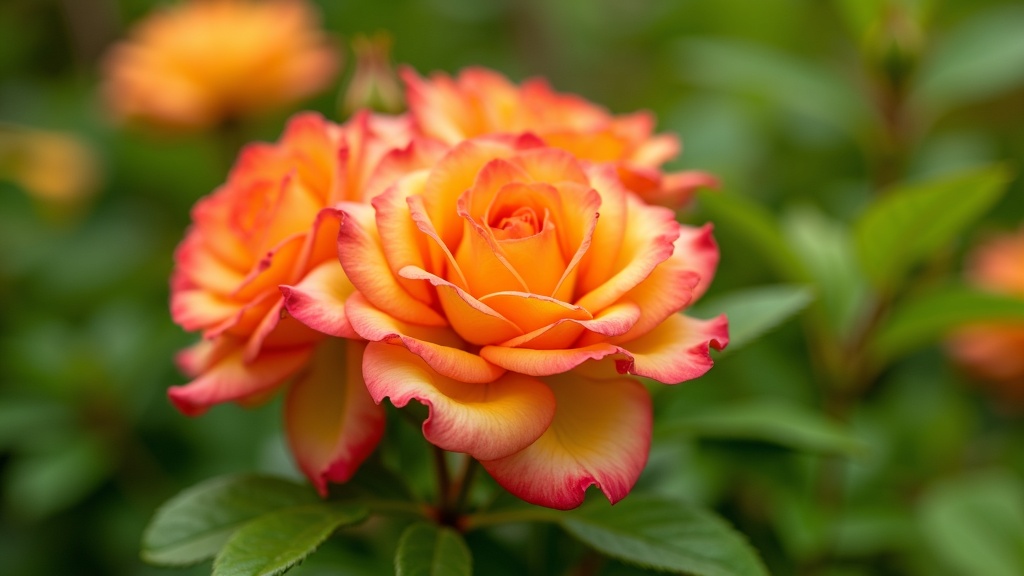
What Makes Orange & Coral Roses Unique?
Orange and coral roses offer way more variety than a casual glance suggests. The orange palette can swing from loud tangerine to softer, sunset golds.
Coral, meanwhile, hangs out in that sweet spot where orange meets pink—think glowing peach through luscious watermelon.
These colors weren’t always around; they only burst onto the scene once breeders started experimenting in the early 20th century. Hybridizers blended wild species with standard garden roses, unlocking all sorts of unexpected tones.
What grabs me most is how these colors feel so fresh and up-to-date. For a long time, people leaned toward deep reds or creamy whites for their rose beds.
Now, orange and coral fit right in with gardens designed to pop and create energy. Their modern vibe suits contemporary homes, urban patios, and even minimalistic landscapes with bold, intentional splashes of color.
Something else to keep in mind is how breeders continue to cook up something new, aiming for unique shades and improved resilience.
Recent years have brought out roses that are not only more resistant to disease but also display an even wider range of hues.
Some modern hybrids blend orange and coral with tinges of yellow, pink, or gold—a far cry from traditional single-shade roses, giving gardeners and designers endless options.
This constant pursuit for the next level cool appearance and performance keeps the orange and coral categories especially exciting.
Symbolism of Orange & Coral Roses
Roses have always packed a punch when it comes to sending a message with color. Orange roses are known for their association with excitement, confidence, creativity, and enthusiasm.
Give someone an orange rose, and it says, “I’m cheering you on wholeheartedly,” or maybe, “I can’t get enough of your vibe.”
This makes them a favorite for moments that call for a spark, like promotions, new adventures, or even a playful romantic gesture.
Coral roses, on the other hand, sit in a gentler lane. Their softer tones are all about friendship, admiration, and sincere gratitude.
I see coral picked a lot for birthdays, thank-you bouquets, or even modern wedding arrangements where that down-to-earth yet joyous feel is the goal.
In social events today, mixing orange and coral roses has become a go-to for those who want their floral choices to feel upbeat and current—perfect for milestone celebrations that want more than the classic red or pastel vibe.
These rose colors are also becoming a symbol of new beginnings and positive energy in group settings, reflecting not only the sentiments of the giver but also boosting the overall mood of the event itself.
Popular Orange & Coral Rose Varieties
There’s a surprisingly big range when it comes to choosing a variety. Here’s a quick walk-through of top options you’ll want to know:
- Tropicana (Super Star): One of the classic orange hybrid teas, Tropicana flaunts large, glowing orange blooms with a mild fruity scent. It’s been wowing rose lovers since the 1960s. Vivid color, upright habit, and great as a cutting rose.
- Chris Evert: Named for the legendary tennis star, this rose brings together golden orange petals with ruffled red-shaded edges. I love its twotoned effect when seen up close.
- Easy Does It: A floribunda known for a coral apricot mix and soft ruffled petals. Flowers in big clusters; pretty hardy, especially for folks new to growing roses.
- Livin’ Easy: This one earns its name. Bright tangerine blooms that don’t stop coming all season, plus shiny green leaves and solid disease resistance.
- Sunset Celebration: Going after more elegance? Sunset Celebration pulls soft coral and pink together with golden touches for a classy look in both borders and bouquets.
- Lady of Shalott (by David Austin): A richly scented English rose blending orange, apricot, and copper. Its semidouble cup shape and bushy habit stand out in cottage gardens or even containers.
- Westerland: This rose is known for its robust climbing ability and clusters of copper-orange flowers. It’s highly fragrant and perfect for fences or arbors, giving a vibrant display for much of the growing season.
- Hot Cocoa: A unique hybrid tea offering smokier orange tones, almost rust-like at times, with a hint of chocolate fragrance. Works well in modern and rustic garden styles alike.
Most nurseries or catalogs showcase at least a few of these, and I’ve found some of my best specimens by searching local rose shows or asking specialty growers what’s thriving in my region.
It’s wise to check local gardening forums or extension services, since some varieties perform better depending on your local climate and soil makeup.
How to Cultivate Orange and Coral Roses
Getting orange and coral roses to look their best comes down to knowing what helps their color pop and how to keep those blooms coming all season. Here’s what I focus on:
- Soil & Fertilizer: Rich, loamy soil with plenty of organic matter gives these roses a strong start. I mix in well-rotted compost and use a rose specific fertilizer to support vibrant petals. Balanced feeding is key; too much nitrogen can bump up leaves but dull flower color, so I stick to a schedule and dial things down in late summer.
- Sunlight: These roses love sunlight. Six hours or more of direct sun helps their orange and coral hues get extra vivid. Shadier spots can turn flowers muddy or fade the unique tones.
- Watering & Pruning: Consistent watering right at the base helps roots and keeps powdery mildew away. I avoid wetting the leaves unless I’m hosing off pests. Pruning happens after the final frost to remove dead wood, shape the bush, and encourage new flowering stems.
- Outdoor vs. Greenhouse: Outdoor beds work great in most climates, but if you’re in a spot with really harsh heat, a greenhouse can help protect color (especially from bleaching sun or quick temperature swings). Otherwise, just plant where they won’t bake in the afternoon sun if you live somewhere hot.
- Common Issues: Fading can happen fast in intense weather. Mulch helps with consistent moisture and temperature. Aphids and mites are drawn to these roses, so I keep an eye out and spray with insecticidal soap as soon as I spot any trouble.
- Winter Care: In colder regions, add extra mulch at the base to insulate roots, and consider wrapping the lower stems with burlap to guard against frost damage. Some gardeners also choose to mound soil above the graft union until spring arrives.
- Pest & Disease Management: Beyond aphids and mites, orange and coral roses can sometimes attract Japanese beetles and thrips. Handpick beetles in the morning and use sticky traps sparingly. For fungal issues, focus on good air circulation and clean up fallen leaves routinely to minimize outbreaks.
- Encouraging Rebloom: Deadhead spent flowers to prompt repeat blooming. Remove faded blooms just above the first set of healthy leaves, and new buds will quickly appear throughout the growing season.
Pro Tip: For deep, saturated colors on your roses, choose blends of organic fertilizers with magnesium and potassium, and avoid overwatering in the weeks leading up to the main bloom time.
Where to Find Orange & Coral Roses
Picking healthy plants is pretty important for getting these shades to look good in your space.
I usually start with independent nurseries nearby, where I can check the live plants in person.
Big mail-order suppliers (like Jackson & Perkins or David Austin) carry great selections, including newer hybrids and hard to find colors.
Specialty online shops sometimes have exclusive hybrids if you’re after an extra rare shade.
For florists, orange and coral roses are often available as part of their modern arrangement lineup.
Just mention what vibe you’re going for, and they’ll have ideas for fresh cut bouquets.
Many online cut flower retailers also offer single variety bunches of orange or coral roses shipped nationwide for holidays or events.
Farmer’s markets in summer and early fall often feature regional growers with unique varieties as well.
When buying, I check for leaves free of black spot or mildew and look for stems with several healthy buds.
For truest color plants, shop when some flowers are open so you can see the shade firsthand (photos can sometimes exaggerate or misrepresent the real hue).
Uses of Orange & Coral Roses in Gardens & Floral Design
Orange and coral roses bring serious energy to all kinds of designs.
I plant them as focal points, especially surrounded by more subtle tones like white, soft yellow, or even pastel purples, which makes the orange and coral shades really shine.
For mixed borders or cottage gardens, these colors can carry the “sunset effect”—that awesome blend of gold, pink, and orange that looks like the golden hour, right in the garden bed.
In cut flower work, these roses look incredible in wedding bouquets, party arrangements, or just as a pop of color for the dining table.
Florists often mix them with eucalyptus, dusty miller, or deep purple blooms to shine a light on the warmth.
I use them in big vases for celebrations; the color just feels happy and inviting, no matter the occasion.
If you want to give a boost to a tired garden bed, grouping orange and coral roses near silver leaved plants like lamb’s ear, or among drought ready sedums, creates awesome textural contrast with a fresh, updated vibe.
Edging modern patios with these roses or placing them in urns alongside stone paths gives that sharp, Instagram able look that’s trendy with today’s gardeners and designers.
In larger gardens, let groups of orange and coral roses spill over retaining walls for a cascading effect sure to draw a crowd.
Arranging orange and coral roses in high-drama centerpieces with tall snapdragons or soft peonies shows off their flexibility.
Even as single stems in glass bud vases, these roses pack a punch, perfect for minimalist or modern interiors.
Some community gardens and parks now plant mass displays of these hues to draw in visitors, demonstrating the universal crowd-pleasing power of this color combo.
Recommended Products
- Orange & Coral Rose Plants/Seeds: Shop for varieties like Tropicana, Easy Does It, or Lady of Shalott from trusted online nurseries or local suppliers.
- Rose Fertilizer: I like slow release rose foods that contain magnesium; helps color pop and supports repeat blooms.
- Irrigation Kits: Simple drip irrigation or soaker hoses make regular watering easy, especially in bigger beds.
- Pruning & Care Tools: A clean pair of bypass pruners, gloves, and a lightweight watering wand come in handy for all season care.
- Mulch: Bark mulch or composted leaves retain moisture, keep soil temps stable, and suppress pests, which is especially helpful for maintaining bold flower color in hot months.
- Organic Pest Controls: Neem oil sprays and insecticidal soap are good for gently handling pests without disrupting pollinators or beneficial bugs in your garden.
FAQs About Orange & Coral Roses
Are orange roses natural or hybrid?
Most orange and coral roses you see today were developed through hybridization in the past century. They aren’t naturally occurring in the wild like red or white roses, but the blending of species brought out these exciting colors.
What do coral roses symbolize in gifting?
Coral roses are popular for expressing friendship, appreciation, or admiration; sometimes even happiness and joy without the deeper romantic message of red roses.
Which orange rose variety is the most fragrant?
Tropicana is famous for its fruity, sweet scent. Lady of Shalott (from David Austin) also has a lovely warm fragrance, plus great repeat bloom potential.
Can orange roses be grown in containers?
Absolutely! Compact floribundas like Easy Does It or miniature orange roses work really well in large pots. Just make sure containers have good drainage, rich soil, and consistent water.
Will the color of orange and coral roses fade in harsh sunlight?
These colors are generally stable, but extreme summer heat and intense sun can cause some fading—mulch and late afternoon shade can help keep shades bright throughout the season.
Is it possible to propagate orange and coral roses at home?
Yes, many gardeners have success propagating these roses from cuttings or by layering. Just use sharp, sterilized tools, and be patient as root development can take several weeks.
Wrapping Up
Orange and coral roses are bright, friendly additions to both gardens and bouquets.
Their colors set a fresh, lively tone that fits with today’s style, whether you’re planting a backyard showpiece or sending a cheerful arrangement.
Experiment with these bold shades for a garden that feels modern, upbeat, and totally one-of-a-kind.
With a wide range of varieties now available, plus helpful tips for care and display, these roses are easier than ever to put to work in your personal oasis.
Ready for a fresh twist on classic rose gardening?
Keep an eye out for the next guide in this Unusual Rose Colors Series: Unusual Rose Colors in Greenhouses – How Controlled Environments Affect Pigmentation.
Happy gardening and stay tuned!!!!!!!!!
Here’s a little transparency: Our website contains Amazon affiliate links. This means if you click and make a purchase, we may receive a small commission. Don’t worry, there’s no extra cost to you. It’s a simple way you can support our mission to bring you quality content.”


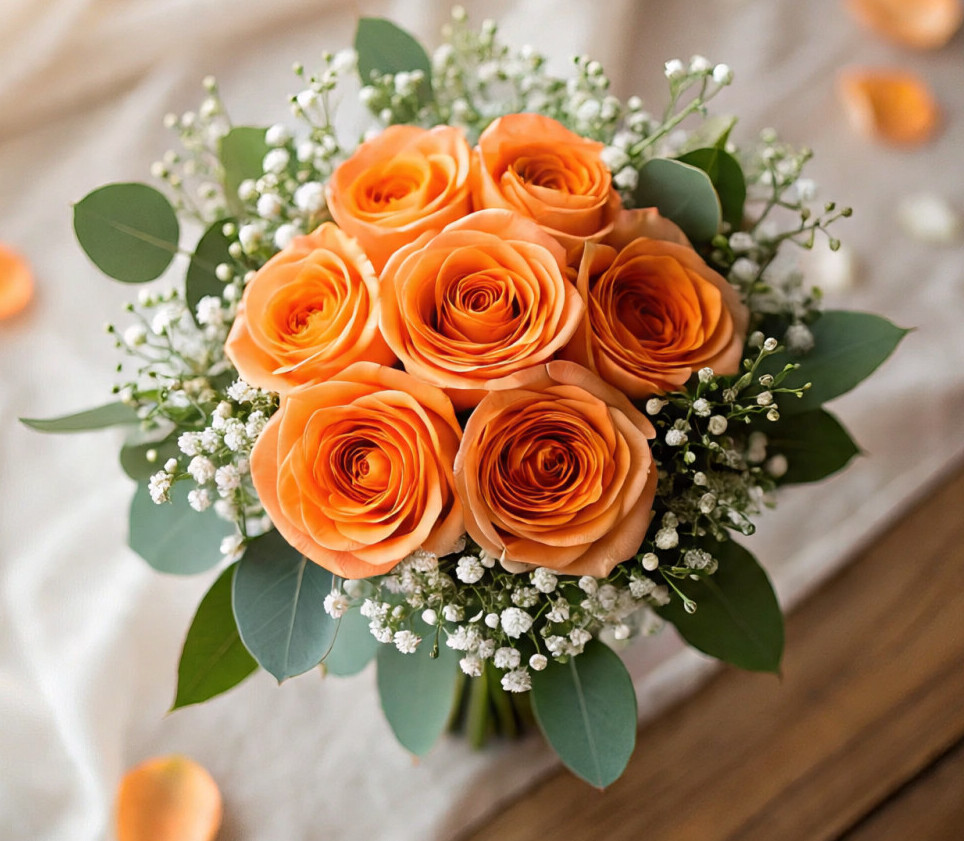
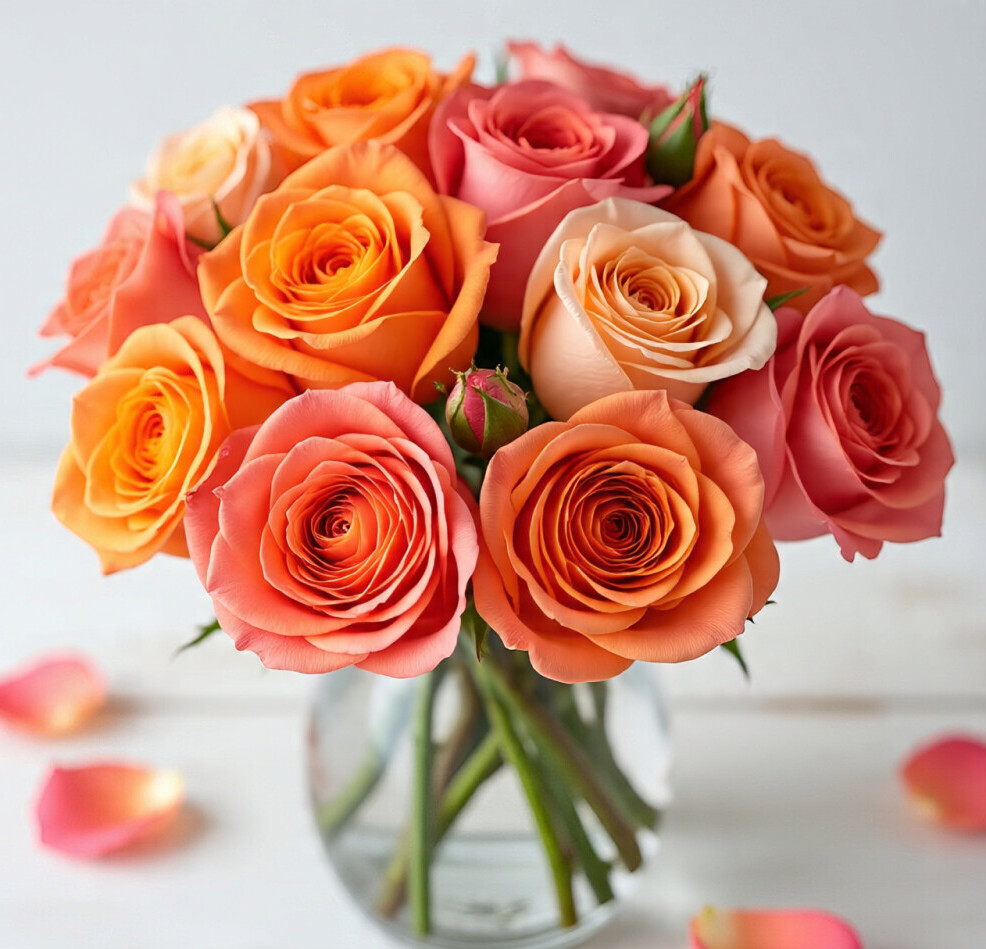
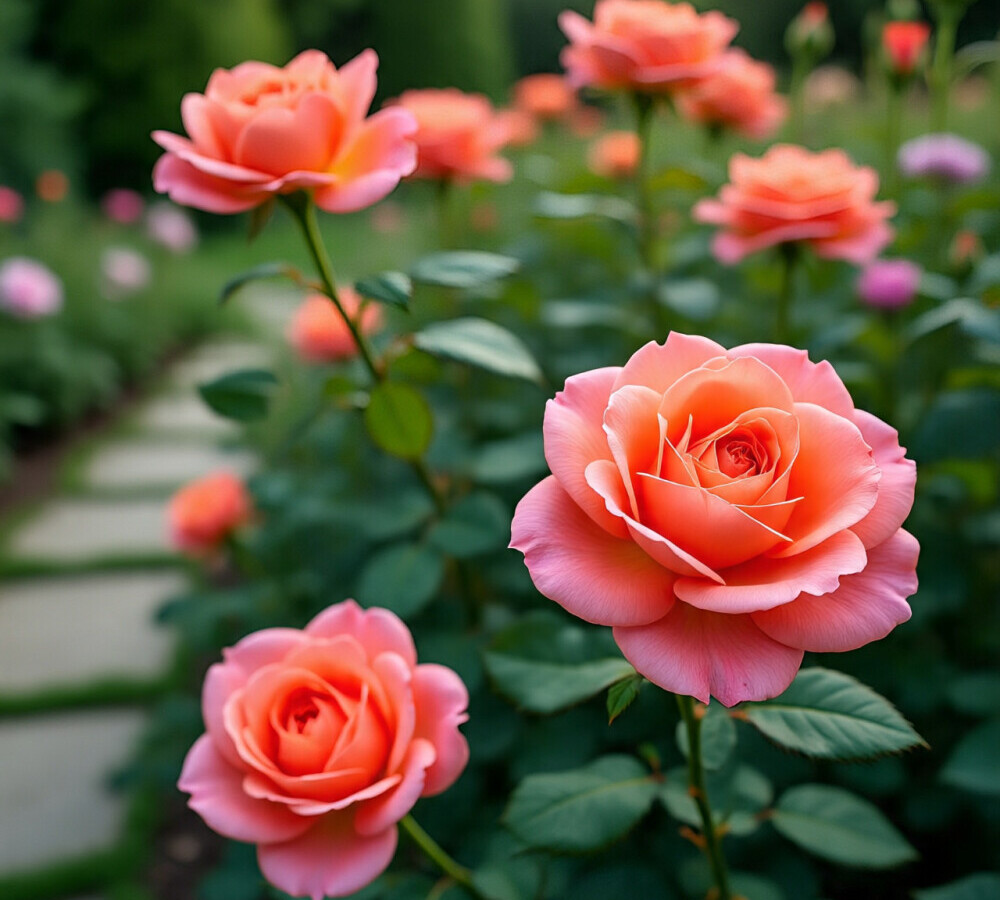
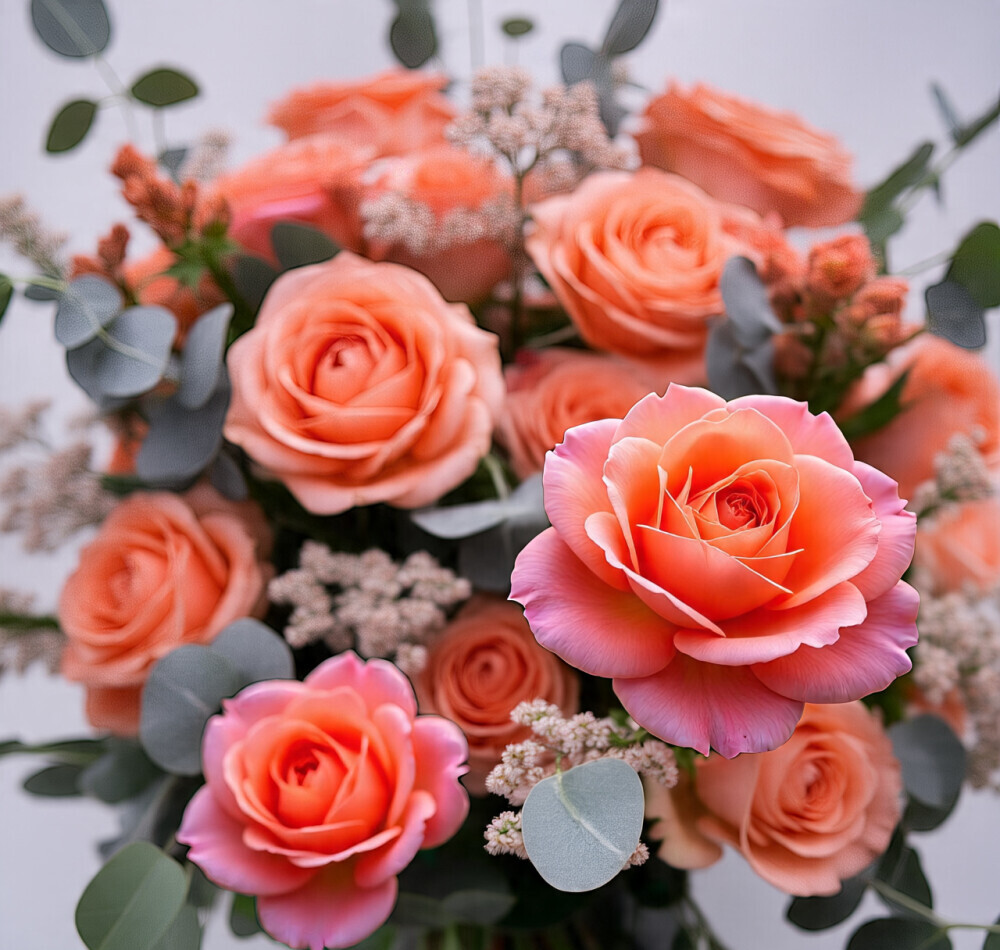
Orange and coral roses are such an underrated colour group — they really bring that pop of warmth and cheer to a border. I planted a ‘Livin’ Easy’ floribunda a few years ago and it’s still one of the most eye‑catching shrubs in my yard, with blooms that almost glow against the green foliage. Do you have any favourite varieties that hold their colour well in hot sun? Some of mine start out a saturated tangerine and then fade to apricot, which is pretty but different than the initial pop. I find that coral tones pair beautifully with purples and blues like salvia or catmint for a modern, high‑contrast look. Are orange roses generally as hardy and disease‑resistant as their pink and red cousins or do they need extra care? Thanks for spotlighting these vibrant roses — they definitely deserve more love in contemporary gardens.
Thank you, A Jaynes, for sharing your enthusiasm for orange and coral roses.
I’m happy to hear that ‘Livin’ Easy’ has been a standout in your garden.
When it comes to varieties that hold their color well in hot sun, ‘Sunblaze’ and ‘Tropicana’ are known for their vibrant orange hues that don’t fade as quickly.
However, some degree of color change is natural, and the apricot tones can be a lovely bonus! I completely agree with your pairing suggestions – coral tones with purples and blues create a stunning contrast.
As for hardiness and disease resistance, orange roses can be a bit more finicky, but many modern varieties have been bred to be more resilient.
Regular care, like proper pruning and mulching, can help keep them healthy. Thanks for sharing your experience and for the love for these vibrant roses